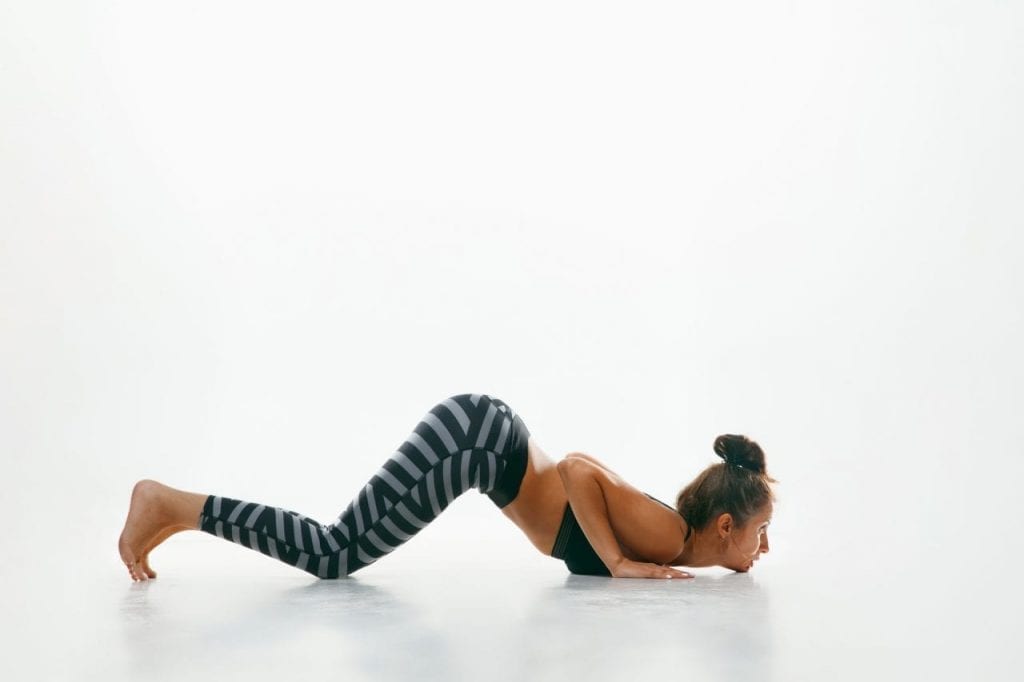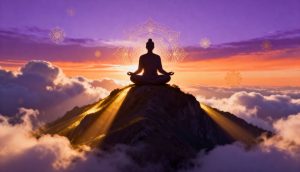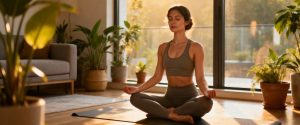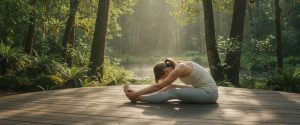What is Yin Yoga and why should you practice it?
The Yin Yoga is a slow and meditative style of yoga that focuses on working the deeper connective tissues of your body: ligaments, joints, and fascia. Unlike more dynamic styles such as vinyasa or ashtanga, yin yoga consists of holding postures for extended periods, usually between 3 and 5 minutes.
This approach allows you to stretch and strengthen those areas of the body that often go unnoticed in more physical practices. Furthermore, it promotes mental calm and emotional balance, making it ideal for those seeking to reduce stress and reconnect with themselves.
Are you wondering why you should practice it? Here are some reasons:
- Deep relaxation: It helps you slow down and release accumulated tensions in the body and mind.
- Improve mobility: By working on connective tissues, you will notice an increase in your flexibility and range of motion.
- Internal connection: It is an opportunity to listen to your body and cultivate patience while you focus on your breathing.
- Perfect complement: If you already practice more active sports or styles of yoga, yin yoga provides the balance you need.
Yin Yoga is not just a physical practice, but a gateway to self-care and introspection. Are you ready to experience its benefits?
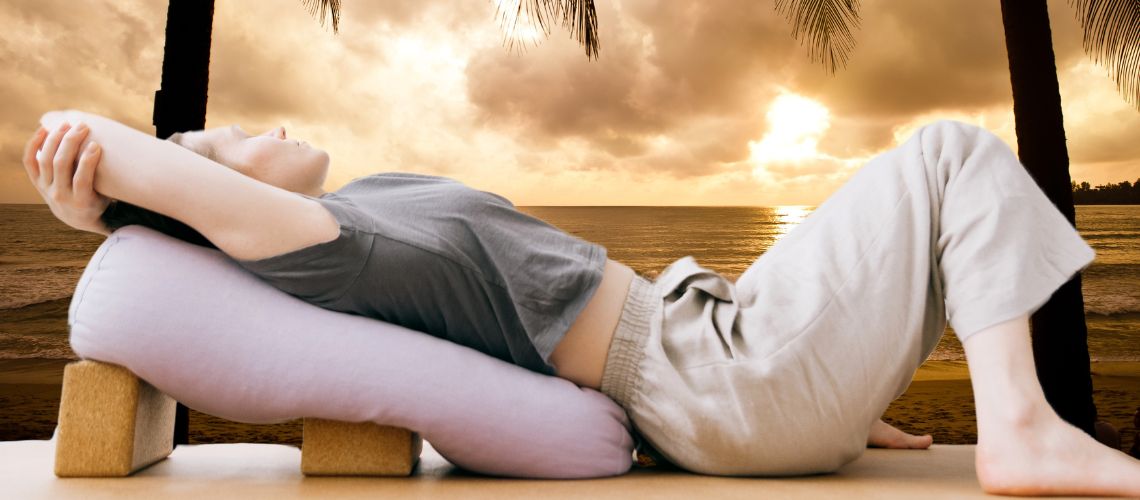
Origin of Yin Yoga
The Yin Yoga was founded in the late 1970s by Paulie Zink, a yoga instructor and expert in Taoist martial arts. Inspired by Tao Yin, an ancient Chinese practice that combines movement and meditation, Zink integrated elements of traditional Chinese medicine and yoga asanas to create this unique practice.
What distinguishes Yin Yoga is its focus on holding postures for extended periods. This allows for working on deep connective tissues, such as ligaments and joints, which is not easily achieved in more dynamic styles of yoga.
Additionally, Yin Yoga is based on the principles of Taoism and ancient Chinese philosophies, which believe in the flow of Qi (energy) through channels in the body. By practicing Yin Yoga, one seeks to open these blockages to allow the energy to flow freely and balanced.
This practice is also influenced by the idea of yin and yang, where yin represents the calm, stable, and hidden, while yang is the active and dynamic. Yin Yoga explores the more introspective and meditative side of this duality, offering a deeply connecting experience with oneself.
What are Yin Yoga classes like?
The Yin Yoga classes are a space to disconnect from the external noise and reconnect with yourself. Unlike other dynamic styles, here everything flows with calm and patience.
- Relaxed start: The class begins with a brief meditation or conscious breathing to help you land in the present moment and release accumulated tensions.
- Long and deep postures: During practice, you will move through a series of seated or lying down postures, designed to work on connective tissues such as ligaments, joints, and fascia. Each posture is held for 3 to 5 minutes (or longer, depending on experience).
- Use of props: It is common to use accessories like blocks, cushions, or blankets to adapt the postures to your level of comfort. The goal is not to force, but to allow your body to relax and release!
- Silence and connection: Instead of constant movements, silence and mindfulness are prioritized. This gives you space to observe your breath and your physical and emotional sensations.
- Calm closure: Classes usually end with a resting pose like Savasana, accompanied by soft music or a moment of guided reflection.
Yin Yoga classes do not require prior experience. They are ideal if you seek to reduce stress, improve your mobility, and cultivate a more introspective practice.
Yin Yoga Poses
Whenever we feel stressed or anxious, our body manifests it as tension mainly in the shoulders, lower back, and hips. Therefore, we recommend that you practice these poses when you go through stressful situations. Practicing them just before going to bed is also helpful for sleeping deeply.
You will need a yoga mat or a yoga pillow, or a cushion.
1. Butterfly
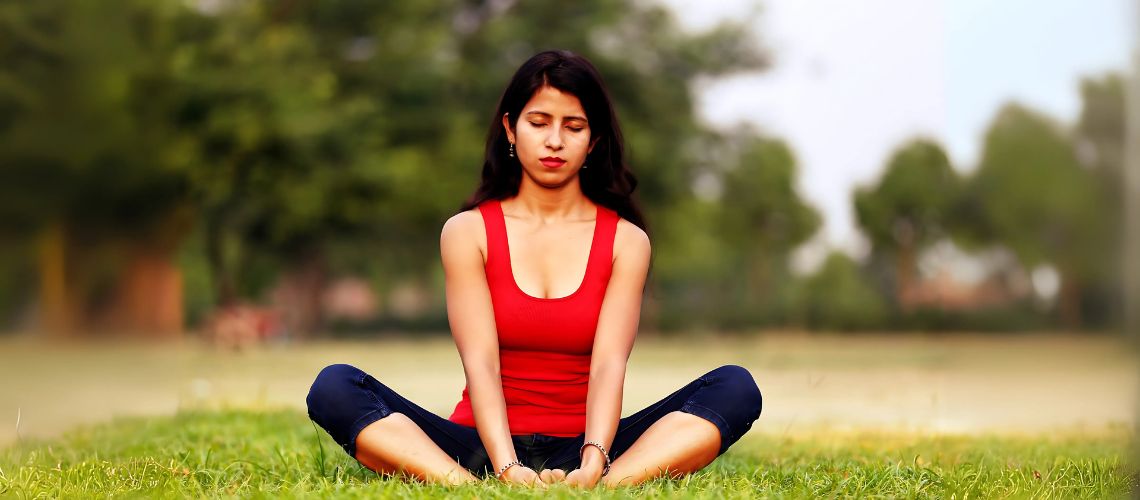
The Butterfly Pose is a classic in Yin Yoga that focuses on opening the hips and stretching the inner thigh muscles. To perform it, sit on the floor with your back straight, bring the soles of your feet together, and let your knees fall to the sides.
In yin yoga, you can gently lean forward, letting gravity do the work, and hold this position for 3 to 5 minutes.
This posture is ideal for releasing the accumulated tension in the pelvis and lower back. It also calms the mind and prepares the body for a deeper practice or for meditation. Use cushions or blocks if you need additional support.
2. Melted Heart or Anahatasana

The Anahatasana Pose, also known as the Melted Heart Pose, is a deep opening position that combines a gentle stretch of the spine and chest with an emotional connection.
In this position, you start in a four-point stance (hands and knees), and then walk your hands forward, allowing your chest to move closer to the ground while keeping your hips elevated directly above your knees.
Keep your forehead or chin on the ground, depending on your level of comfort, and hold the position for 3 to 5 minutes. This stretch opens the chest, shoulders, and upper back, helping to relieve the tension accumulated in these areas.
It is ideal for releasing stored emotions and fostering a sense of openness and vulnerability. If you need an adjustment, place a blanket under your chest or front for more support.
3. Viparita Karani
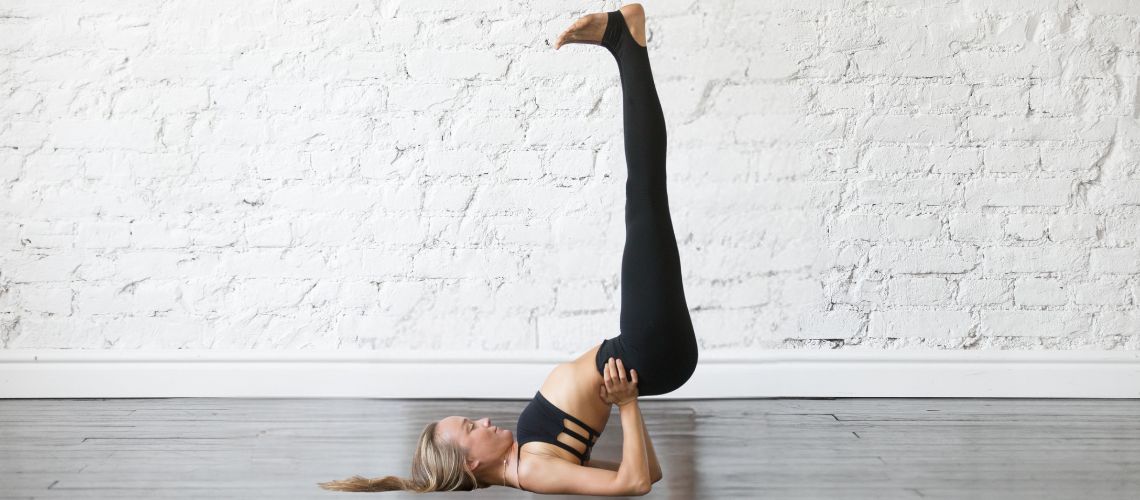
The Viparita Karani Pose, known as Legs-Up-The-Wall, is a restorative position that invites deep relaxation and rest. To practice it, simply lie on your back and elevate your legs, resting them against a wall. Adjust the distance of your hips to the wall according to your level of comfort.
It is ideal for improving circulation, as it promotes venous return to the heart, and to relieve heaviness in the legs after a long day. It also soothes the nervous system, reduces stress, and stimulates a feeling of tranquility.
Hold this position for 5 to 10 minutes, using a blanket or cushion under your hips for more support if you need it. It’s an excellent way to close your practice or simply give yourself a moment of self-care.
4. Square Pose (Agnistambhasana)
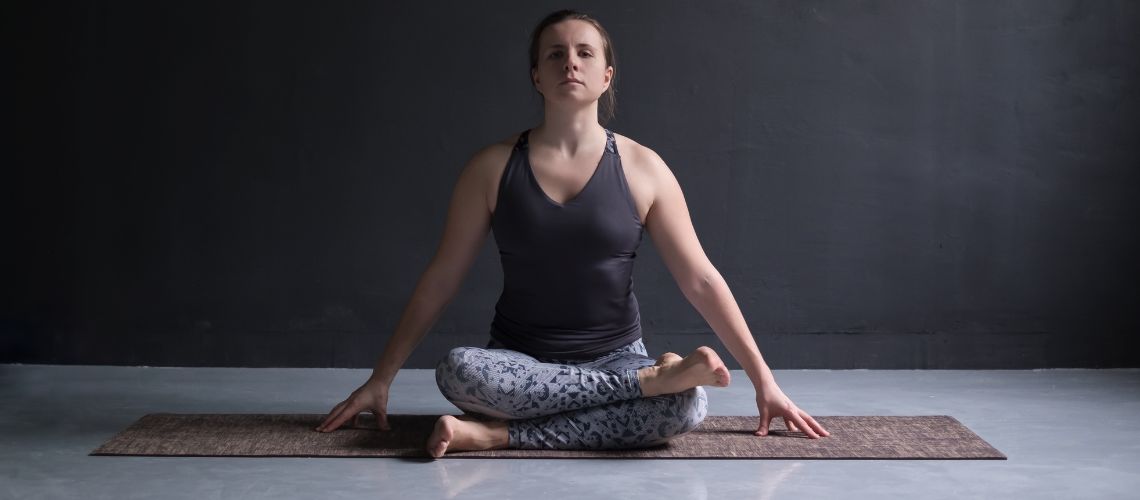
The Square Pose, also known as Agnistambhasana or Fire Log Pose, is a position that works deeply in the hips and lower back. To enter this pose, sit on the floor and place one leg over the other so that the shins are stacked to form a square (or as close to it as possible). It is important that both shins are parallel and that your feet remain active to protect the knees.
In Yin Yoga, you can lean forward to intensify the stretch and hold the pose for 3 to 5 minutes. This deep stretching helps to release the accumulated tension in the hips, improve flexibility, and promote relaxation in the legs and pelvis.
If you feel discomfort, use a block or cushion to elevate the hips and reduce pressure on the knees. It is a powerful pose for those looking to work both on the physical and emotional level, as the hips tend to be a place where repressed emotions are stored.
5. Caterpillar Posture
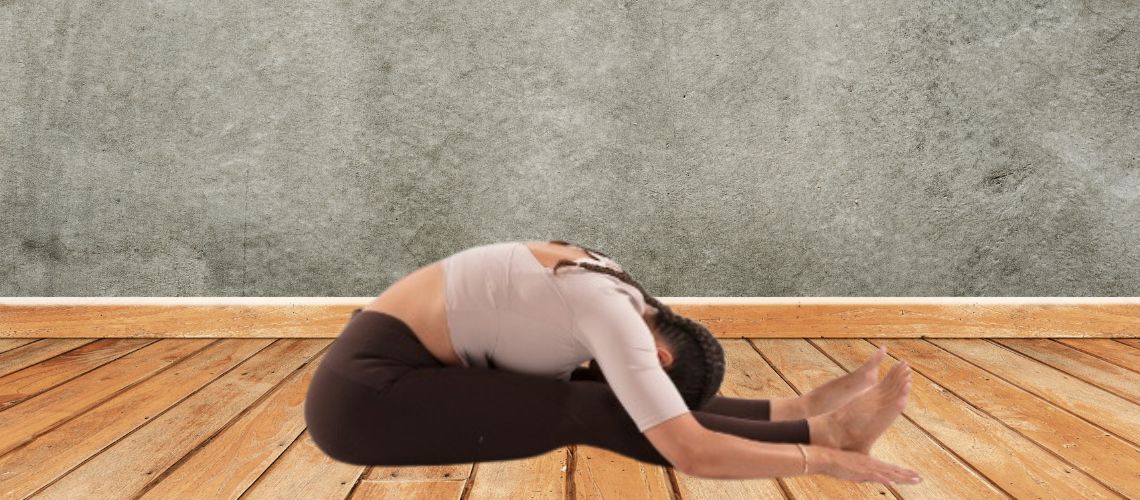
The Caterpillar Pose is a classic position in Yin Yoga that focuses on a deep stretch of the spine and the back of the body. To practice it, sit on the ground with your legs extended forward, keeping your feet relaxed. From there, gently lean forward from the hips, allowing your torso to fall over your legs in a relaxed manner.
It is not about reaching a physical goal (like touching your toes), but about letting gravity do the work. You can use a cushion or a blanket under your knees or torso for more comfort and hold the position for 3 to 5 minutes.
This stretch works on the muscles of the back, the hamstrings, and the fascia, while promoting a state of introspection and mental calm. It is ideal for relaxing the mind, releasing tensions, and preparing the body for meditation or rest.
6. Bananasana
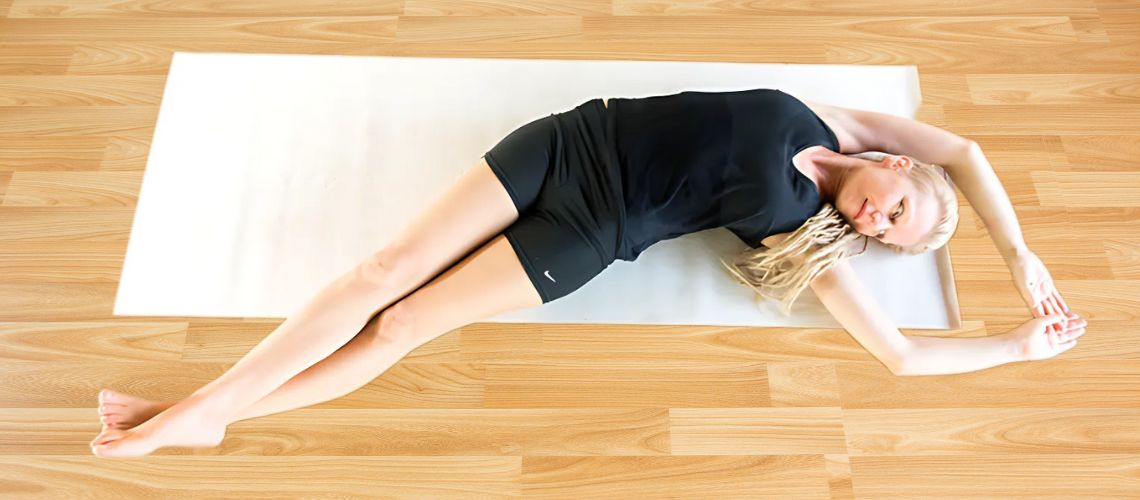
The Bananasana Pose, or Banana Pose, is a deep lateral stretch that is restorative and works the sides of the body, from the hips to the shoulders. It is a common pose in Yin Yoga, perfect for opening the body and relaxing the mind.
To practice it, lie on your back in a neutral position. Then, move both feet to one side of the mat, creating a half-moon shape with your body. Stretch your arms over your head and bring them towards the same side as your feet. You can cross your ankles or interlace your fingers to intensify the stretch. Make sure to keep your shoulders and pelvis relaxed on the floor.
Maintain the posture for 3 to 5 minutes on each side. This stretch helps release accumulated tension in the lower back, the obliques, and the intercostals, as well as improving breathing by opening the chest and sides.
It is a simple yet powerful posture to relax the body and cultivate a sense of space and expansion.
7. Supta Baddha Konasana
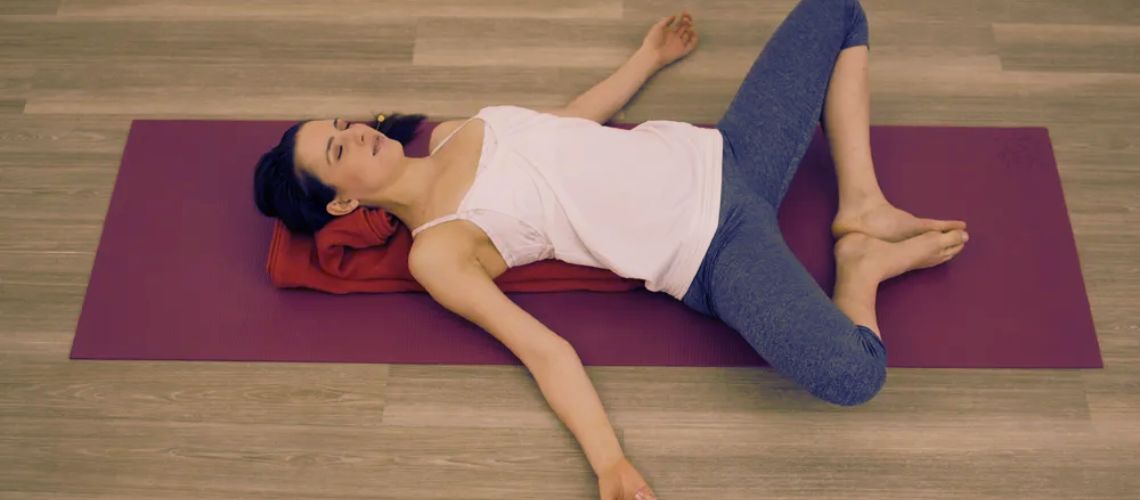
The Supta Baddha Konasana Pose, also known as the Reclining Shoe Pose, is a restorative position that gently opens the hips and chest, promoting deep relaxation.
To practice it, lie on your back and bring the soles of your feet together, allowing your knees to fall to the sides in a diamond shape. You can use blocks, cushions, or blankets under your knees for added support and comfort. If you need a more intense stretch, allow gravity to gently work on your hips.
Maintain the position for 3 to 5 minutes or more, focusing on deep breathing and allowing your body to relax completely. This stretch helps to open the hips, release tension in the pelvis, and stimulate circulation. It also promotes mental calmness and is ideal for reducing stress and anxiety.
8. Savasana

The Savasana Pose, or Corpse Pose, is the perfect closure for any yoga practice. It is a position of deep relaxation that allows the body and mind to integrate and assimilate the benefits of the practice.
To enter Savasana, lie on your back with your legs extended and slightly apart, allowing your feet to fall naturally to the sides. Place your arms relaxed at your sides, with palms facing up as a sign of openness. Adjust your position so that you are completely comfortable: use a blanket to cover yourself, a cushion under your knees, or neck support if you need it.
In this position, simply deliver the weight of your body to the ground and focus on a gentle and natural breath. Hold the position for 5 to 10 minutes, or as long as you need to achieve a feeling of absolute calm.
Savasana is ideal for releasing stress, reducing muscle tension, and cultivating a state of mindfulness. Although it seems simple, its power lies in the ability to completely let go and be present in the moment.
9. The Child’s Pose
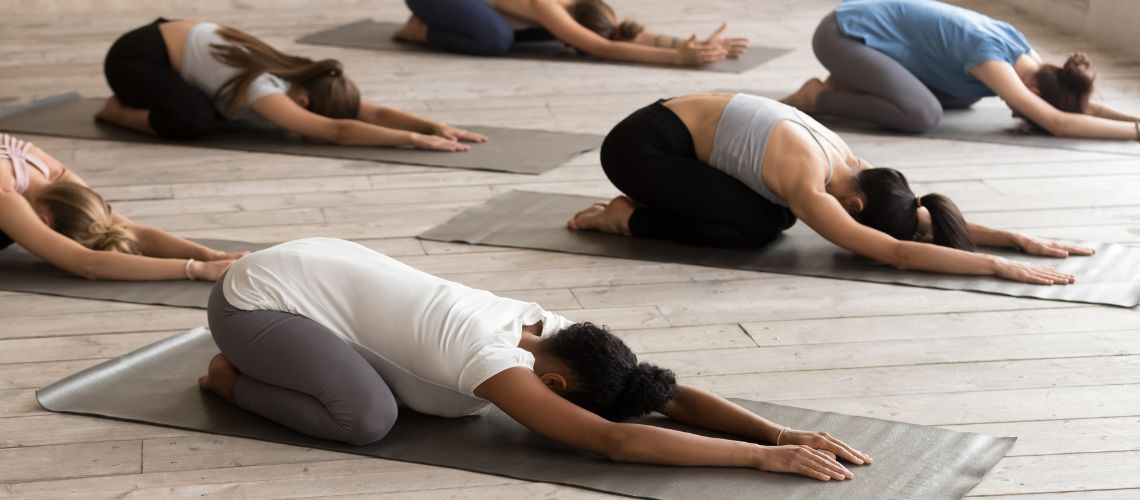
The Child’s Pose, or Balasana, is one of the most comforting and restorative poses in yoga. It is ideal for resting between sequences or for starting and closing your practice in a calm manner.
To practice it, start in a four-point position (hands and knees). Then, bring the hips towards the heels while extending the arms forward or leaving them relaxed at the sides. Rest the forehead on the ground or on a cushion if you need additional support. The knees can be together or apart, depending on what is most comfortable for your body.
Child’s pose helps to release tension in the lower back, hips, and shoulders, while calming the mind and encouraging introspection. Hold this pose for 1 to 3 minutes or longer if you need a deep rest.
10. Shoelace Position
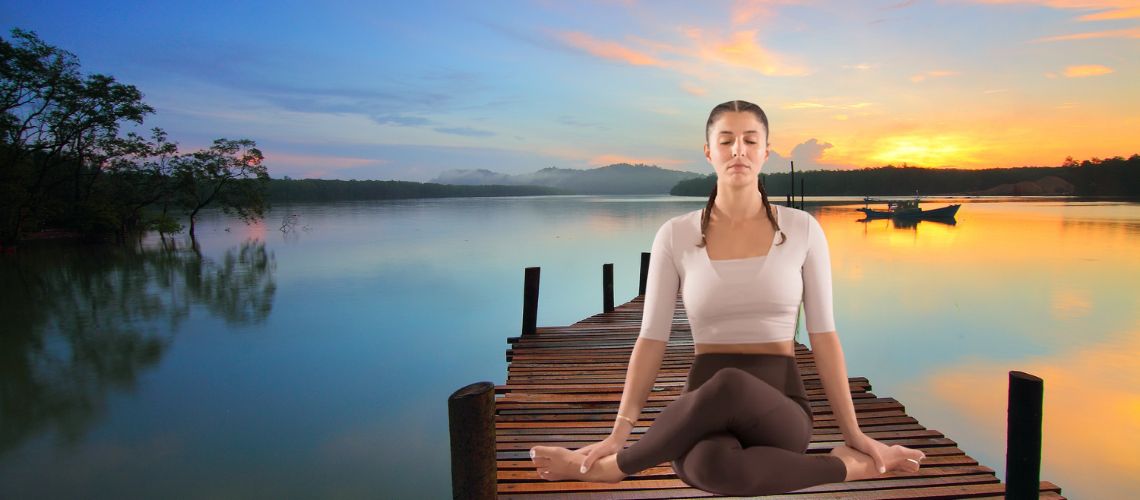
The Shoelace Pose, or Shoelace Pose, is a classic Yin Yoga pose that works deeply on the hips, glutes, and lower back.
To practice it, sit on the floor and cross one leg over the other, aligning the knees one on top of the other, as if forming a “shoelace.” Keep both feet active and place the soles of the feet close to the hips. If you have space, gently tilt your torso forward to intensify the stretch.
This posture stretches the connective tissues of the hips and releases the tension accumulated in the pelvis and lower back. Additionally, it promotes flexibility and mobility in these key areas.
Hold the position for 3 to 5 minutes on each side, allowing gravity to do the work while you breathe deeply. If you feel discomfort, use blocks or cushions to support the hips or knees.
11. Frog Pose

The Frog Pose, or Frog Pose, is a deep Yin Yoga pose that focuses on opening the hips and stretching the inner thigh muscles.
To practice it, start in a four-point position (hands and knees) and slide your knees to the sides, keeping your shins parallel to each other and your feet flexed. Slowly lower your forearms to the ground or rest on a cushion if you need more comfort. Make sure to keep your hips aligned with your knees and allow gravity to deepen the stretch.
This posture is ideal for releasing the tension accumulated in the hips and improving flexibility in the pelvis and thighs. By holding it for 3 to 5 minutes, you can work on both the body and the mind, cultivating patience and presence.
It is important not to force the range of motion and to use supports as needed to avoid discomfort in the knees or hips. The Frog Pose can be intense, but it offers a deep sense of release and opening.
12. Dragon Pose
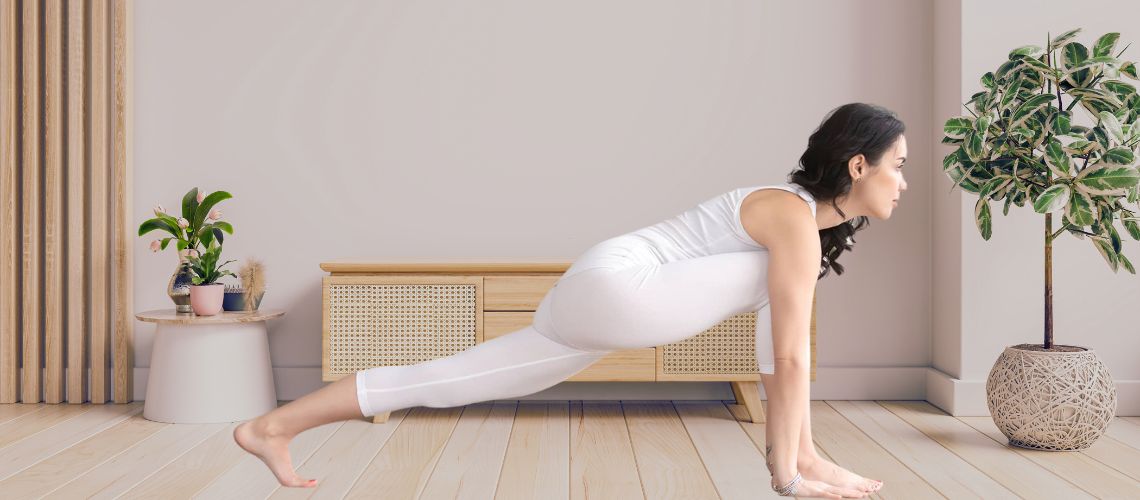
The Dragon Pose is a Yin Yoga posture that offers a deep stretch in the hips, hip flexors, and thighs. Begin from a four-point position (hands and knees), bring one foot forward between the hands, as if you are in a low lunge. Keep the back leg extended or rest the knee on the ground, depending on your level of comfort.
From here, you can adjust the intensity:
- Keep your hands on the ground or on blocks for more support.
- Lower your forearms to the ground for a deeper stretch.
Hold the posture for 3 to 5 minutes on each side, allowing gravity to gently open the hips. It is a powerful pose to release accumulated physical and emotional tension in this area.
Benefits of Yin Yoga
The yin yoga is more than a physical practice; it is a space to reconnect with yourself while caring for your body and mind. We can highlight some of its benefits:
- Deep flexibility: Holding postures for longer allows for work on connective tissues, improving the elasticity and mobility of your joints.
- Total relaxation: Being a slow-paced practice, yin yoga reduces stress and helps you enter a state of deep calm.
- Improves circulation: Gentle and prolonged postures stimulate blood flow, promoting the health of your organs and tissues.
- Connection with yourself: It is an opportunity to look inward, cultivate patience, and connect with your breath and emotions.
- Relieves accumulated tension: Perfect for releasing tension in areas such as the back, hips, and shoulders. Your body will thank you!
Yin yoga is a powerful practice to balance your day to day and give yourself a moment of calm. Dare to try it.
